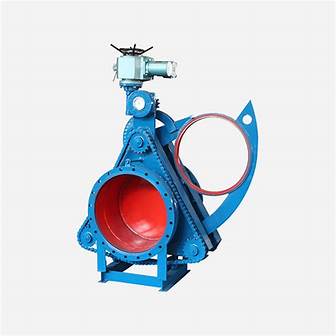flanged outlet
Understanding Flanged Outlets Importance and Applications
In various industrial and engineering disciplines, the need for reliable connection points in piping systems is paramount. One of the most effective solutions to ensure such connections can be found in the form of flanged outlets. These components play a crucial role in the integrity and efficiency of fluid transfer systems, particularly in manufacturing, chemical processes, and construction.
What is a Flanged Outlet?
A flanged outlet is essentially a component that allows for the attachment of piping to a larger pipe or vessel through a flange connection. The flange itself is a flat piece of metal with holes for bolts, which allows for secure joining with another flange. When talking about a flanged outlet, it typically refers to an outlet that has been specially designed with an integrated flange—meaning the pipe or vessel has a built-in flanged area for easy connectivity.
Benefits of Flanged Outlets
1. Versatile Connections Flanged outlets are known for their adaptability. They can accommodate various piping materials and sizes, making them suitable for diverse applications. Whether in a water treatment facility or a petrochemical plant, flanged outlets can be utilized effectively across industries.
2. Ease of Installation The design of flanged outlets simplifies the installation process. The use of bolts provides a robust means of securing pipes without the need for specialized tools or extensive fitting adjustments. This user-friendly approach saves both time and labor costs during installation.
3. Leak Resistance One of the primary concerns in any piping system is the potential for leaks. Flanged outlets, when properly installed, can create a tight seal that minimizes the risk of leaks. This feature is critical in processes involving high-pressure fluids or hazardous materials, where leaks can result in severe safety hazards and costly disruptions.
4. Maintenance and Accessibility Flanged connections allow for easy disassembly and reassembly, facilitating maintenance and inspection. In the event of repairs or replacement, flanged outlets can be detached without the need to dismantle large sections of piping, thereby minimizing downtime and operational impact.
flanged outlet

Applications of Flanged Outlets
Flanged outlets find applications in a multitude of sectors. Here are some notable examples
1. Oil and Gas Industry In the oil and gas sector, flanged outlets are essential for connecting pipelines to tanks, pumps, and compressors. Their leak-proof and robust characteristics make them ideal for handling high-pressure and corrosive substances.
2. Water Treatment Plants In water treatment facilities, flanged outlets are commonly used to connect various filtration systems and delivery pipelines. The integrity of these connections ensures effective treatment processes and the safe transport of potable water.
3. Chemical Processing Flanged outlets are indispensable in chemical processing plants where various chemicals are handled. They can be used in reactors, storage tanks, and transfer lines, ensuring that chemical mixes are maintained within defined parameters, free from contamination or leaks.
4. HVAC Systems In heating, ventilation, and air conditioning systems, flanged outlets are employed to connect ductwork and piping, facilitating efficient airflow and maintaining temperature control in buildings.
Conclusion
Flanged outlets are a critical component in modern piping systems, providing secure, reliable, and versatile connections in a wide array of applications. Their ease of installation, maintenance accessibility, and leak resistance make them indispensable in industries that demand high safety and operational efficiency. As technology continues to advance, the design and manufacturing of flanged outlets will likely evolve, further enhancing their performance and adaptability in various applications. For engineers and professionals across sectors, understanding the importance of flanged outlets can lead to better decision-making in system design and maintenance, ultimately enhancing the reliability of fluid transport systems.
-
The Key to Fluid Control: Exploring the Advantages of Ball Valves in Industrial SystemsNewsJul.09,2025
-
The Versatile World of 1, 2, and 3 Piece Ball ValvesNewsJul.09,2025
-
Stainless Steel Ball Valves: The Ideal Choice for Efficient Flow ControlNewsJul.09,2025
-
Optimizing Fluid Control with Ball Float ValvesNewsJul.09,2025
-
Manual Gate Valves: Essential for Control and EfficiencyNewsJul.09,2025
-
Everything You Need to Know About Butterfly ValvesNewsJul.09,2025
-
The Versatility of Wafer Type Butterfly ValvesNewsJul.08,2025




